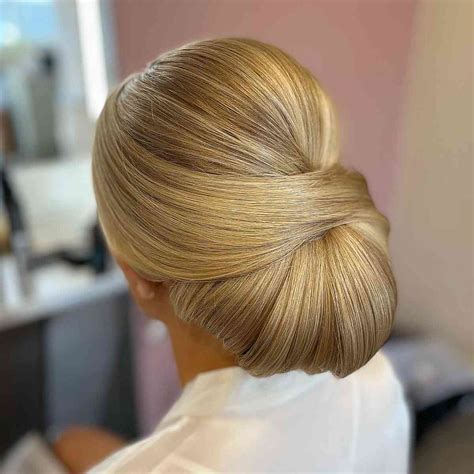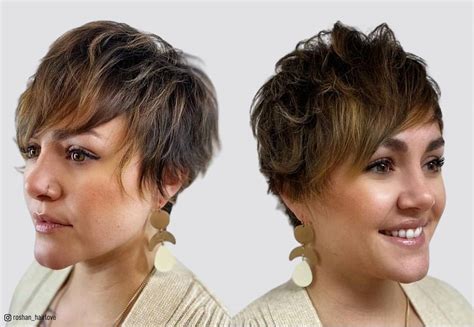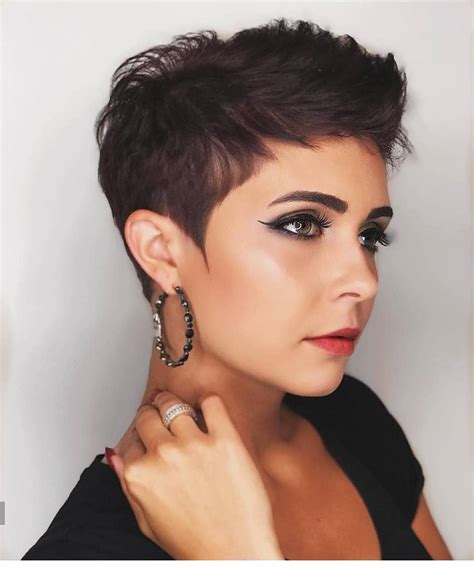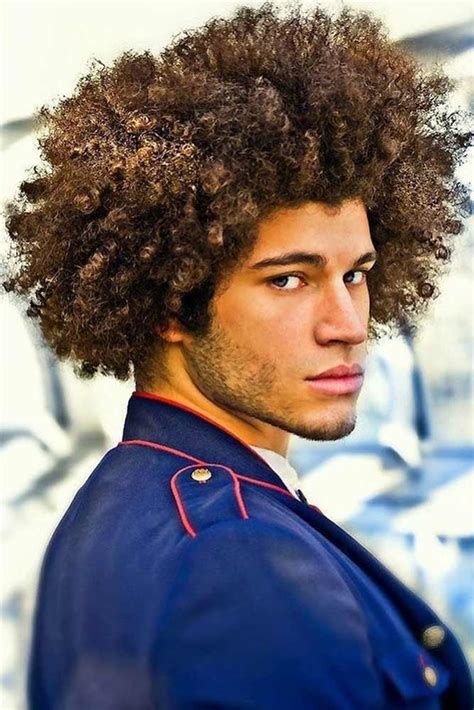Discover the causes of gray hair, explore natural remedies, compare temporary color solutions, master root touch-ups, and discover professional techniques for gray coverage.
Understanding the Causes of Gray Hair
Contents
Gray hair is a natural part of the aging process, and it occurs when the hair follicles stop producing pigment, resulting in a loss of color. This can happen due to a variety of factors, including genetics, stress, and hormonal changes. While some people may start to see gray hairs in their 20s or 30s, others may not experience graying until much later in life.
Genetics play a significant role in determining when and how quickly an individual’s hair will turn gray. If your parents or grandparents experienced premature graying, it’s likely that you will too. Additionally, certain medical conditions, such as thyroid disorders and vitamin deficiencies, can also contribute to the early onset of gray hair.
Stress is another common factor that can lead to graying hair. When the body is under stress, it releases hormones that can affect the hair follicles and disrupt the production of pigment. This can result in the premature appearance of gray hairs. While stress alone may not cause gray hair, it can certainly accelerate the process in those who are genetically predisposed to graying.
Finally, hormonal changes, particularly during menopause, can lead to the development of gray hair. As women age, their bodies produce less melanin, the pigment responsible for hair color. This decrease in melanin production can cause the hair to lose its color and turn gray. This is a natural part of the aging process and is to be expected as women enter menopause.
Exploring Natural Remedies for Gray Coverage
Gray hair is a natural part of the aging process, but many people prefer to cover it up in order to maintain a more youthful appearance. While traditional hair dyes are a popular option for gray coverage, they can contain harsh chemicals that some individuals may prefer to avoid. For those looking for more natural alternatives, there are a variety of remedies that can help conceal gray hair without the need for a dye job.
One popular natural remedy for gray coverage is the use of henna. Henna is a natural plant-based dye that has been used for centuries to color hair and skin. When applied to the hair, henna can provide a rich, red tint that can help to cover up gray strands. Additionally, henna is known for its conditioning properties, which can help improve the overall health and appearance of the hair.
Another natural option for gray coverage is the use of herbal teas. Certain types of herbal teas, such as sage and rosemary, can be brewed and applied to the hair to help darken and conceal gray strands. These teas are rich in antioxidants and other beneficial compounds, which can help nourish the hair and promote healthier, more vibrant locks.
In addition to henna and herbal teas, there are also other natural ingredients that can help cover gray hair, such as blackstrap molasses and coconut oil. Blackstrap molasses is high in vitamins and minerals that can help promote healthy hair growth and improve the overall appearance of the hair. Coconut oil, on the other hand, is known for its moisturizing and conditioning properties, which can help improve the texture and manageability of gray hair.
Overall, there are many natural remedies that can help individuals cover up gray hair without the use of traditional hair dyes. Whether it’s henna, herbal teas, or other natural ingredients, there are plenty of options available for those looking for a more natural approach to gray coverage.
Comparing Temporary Hair Color Solutions
Comparing Temporary Hair Color Solutions
When it comes to covering gray hair, there are many temporary hair color solutions on the market that offer a quick and easy way to conceal those stubborn strands. From root touch-up sprays to temporary hair color waxes, there are a variety of options to choose from. Understanding the different types of temporary hair color solutions can help you make an informed decision on which product is right for you.
One popular temporary hair color solution is root touch-up sprays. These sprays are designed to cover gray roots and blend seamlessly with your natural hair color. They provide a quick and easy solution for covering up gray hair in between salon visits. Additionally, temporary hair color waxes are another option for those looking to conceal gray roots. These waxes offer a semi-permanent solution and can easily be washed out with shampoo.
Another temporary hair color solution to consider is temporary hair color mousses. These mousses are designed to provide full gray coverage and can be easily applied at home. They offer a quick and convenient way to cover gray hair without the commitment of a permanent dye job. Additionally, temporary hair color sticks are also a popular choice for on-the-go touch-ups.
It’s important to note that while temporary hair color solutions offer a quick fix for gray coverage, they may not provide the same level of long-lasting results as permanent hair color. However, they can be a great option for those looking for a temporary solution or for those who want to try out different hair colors before committing to a permanent dye job.
Mastering the Art of Root Touch-Ups
Root touch-ups are a great way to extend the time between full hair coloring sessions, especially when grays start to peek through. The key to mastering this art is to choose the right color and application method. Whether you prefer using store-bought root touch-up kits or DIY natural remedies, there are several options to explore.
When using store-bought root touch-up kits, it’s important to select a shade that matches your current hair color. Look for a formula that offers easy application and long-lasting coverage. Following the instructions carefully and applying the product evenly will ensure a seamless blend with your current color, effectively covering any grays.
On the other hand, natural remedies for root touch-ups can be a gentle and chemical-free alternative. Ingredients such as henna and herbal hair dyes can provide a temporary color boost, effectively covering grays without the harsh effects of synthetic dyes. However, it’s important to conduct a patch test first and follow the specific instructions for each natural remedy to achieve the desired results.
For those who prefer a non-dye approach, root touch-up sprays and powders can be an easy and convenient solution. These products offer a quick fix for covering grays or roots between color treatments. Simply spray or apply the powder to the roots, blending it in for a natural look. Keep in mind that these products are temporary and may need to be reapplied after washing your hair.
If you’re looking for professional techniques for root touch-ups, consider visiting a hairstylist for expert advice and application. They can customize a root touch-up solution to match your current color and blend seamlessly with your existing hair. Whether it’s a root touch-up appointment or a personalized at-home product recommendation, professional guidance can help you master the art of covering grays at the roots.
Discovering Professional Techniques for Gray Coverage
When it comes to covering gray hair, many people turn to professional techniques to achieve the best results. Professional hair stylists are trained in various methods to effectively cover gray and provide clients with natural-looking results. From traditional hair coloring to advanced salon treatments, there are several professional techniques available for gray coverage.
One popular professional technique for gray coverage is single-process color. This method involves applying a permanent hair color all over the head to provide full coverage of gray hair. Professional colorists carefully select the right shade to match the client’s natural hair color, ensuring a seamless and uniform result. Single-process color is a reliable option for those looking to completely cover their gray hair.
Another professional technique for gray coverage is highlights and lowlights. This method involves strategically placing lighter and darker shades throughout the hair to blend and camouflage gray strands. Highlights and lowlights can add dimension and depth to the hair, creating a natural and multi-dimensional look. Professional colorists work with their clients to customize the placement and intensity of highlights and lowlights for a personalized result.
Balayage and ombre are two additional professional techniques that can be used to cover gray hair. These methods involve hand-painting color onto the hair to achieve a natural and sun-kissed effect. Balayage creates soft and subtle transitions between shades, while ombre produces a more dramatic contrast between light and dark tones. Both techniques can effectively blend and disguise gray hair, offering a low-maintenance and modern approach to gray coverage.
Professional techniques for gray coverage often require the skill and expertise of seasoned hair stylists. Whether you opt for single-process color, highlights and lowlights, or balayage and ombre, consulting with a professional colorist can help you achieve the desired results for covering gray hair.












